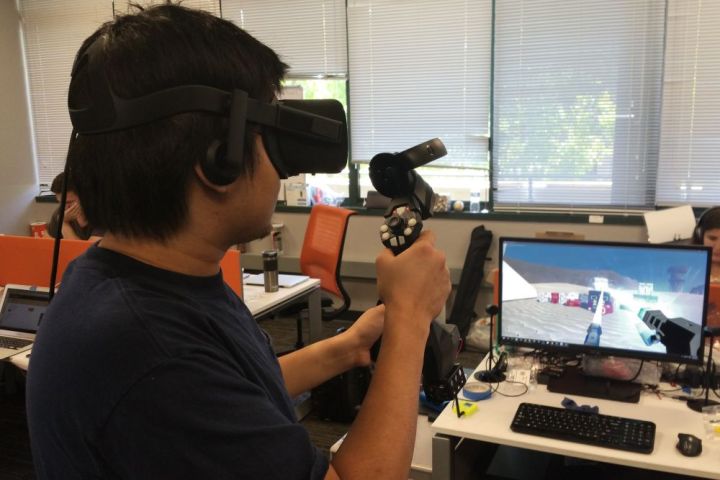
The company’s latest funding round includes a $749,000 Small Business Innovation Research Phase II grant from the U.S. National Science Foundation, with seed investors SV Tech Ventures, the Youku Global Media Fund, SIG Asia Investment Fund, Sand Hill Angels, and the Stanford-StartX Fund providing an additional $1.47 million.
Tactical Haptics recently produced a working prototype of a VR haptics controller that provides realistic tactile feedback in response to virtual reality elements and gameplay. The approach marks a significant leap forward from the rumble-based tactile feedback technology featured in modern gaming consoles, giving players realistic sensations of weight, inertia, and tension.
“Current haptic interfaces are either too expensive, have limited range of motion (force feedback devices), or are too crude (rumble) to portray a broad range of realistic haptic interactions in VR,” Tactical Haptics stated in a press release issued this week.
“Tactical Haptics has created an ungrounded haptic motion controller that utilizes a new form of touch feedback that applies in-hand shear forces to create compelling physical feedback at a price that is viable for consumer markets. With this motion controller in hand, users get a realistic experience of the stretch of a bow and arrow, the inertia of a ball swinging on a chain, the impact of a ball on their virtual tennis racket, the tug of a fish in a fishing game, or the kick of a gun in their favorite shooter game.”
According to the press release, Tactical Haptics will use its latest funding round to create “a developer kit, including mini-games, for VR game developers so they can integrate the company’s advanced haptic controller with their VR game content.”
Speaking to Road to VR, Tactical Haptics CEO Will Provancher confirmed that his team will attend SteamVR’s tracking partner training program, making it likely that the HTC Vive will be the first VR headset to support the company’s haptics technology.
While the Tactical Haptics controller currently uses motion-tracking technology from Oculus Touch and HTC Vive controllers as a foundation, Provancher notes that the company is currently working toward an integrated solution that will not require additional controllers for input.
Pricing for the Tactical Haptics controller has not been revealed, and a release date is not yet known.
Editors' Recommendations
- Researchers develop VR headset with mouth haptics
- Two new ‘game-changing’ VR headsets could arrive at HTC’s ViveCon next week
- The best VR-ready laptops you can buy right now
- Apple reportedly working on an AR headset with Vive-like controllers
- HTC offers cheaper Vive Pro Eye bundles, expands eye-tracking in VR


